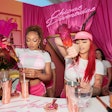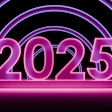
Alex Frias (@iamalexfrias) is the president and co-founder of New York-based experiential agency Track Marketing Group and has produced Hispanic-focused campaigns for Fortune 500 brands including PepsiCo, Heineken, and Diageo over the past decade.
You’ve heard it before: U.S. Hispanics represent the nation’s fastest-growing population with more than 50 million Latinos, a demographic that accounts for more than half of U.S. population growth over the past decade. Less widespread is the idea that U.S. Hispanics also represent arguably the largest opportunity for event marketing and experiential engagement.
Here’s how you can tap into a captive audience that appreciates interactive consumer experiences and is eager to share and spread your social message.
Acculturated or unacculturated?
For event and meeting professionals, the first key step is identifying who the target attendee is. Are you speaking to a second-generation, bilingual, acculturated Hispanic who listens to Drake and Katy Perry during the week and parties to Romeo Santos and Marc Anthony on the weekend? Or are you looking at reaching first-generation, unacculturated Hispanics who spend their day consuming Spanish-language content? Once you hone in on that target demo you can decide what language your pre-, on-site, and post-event messaging should be in.
Some other factors to consider:
Don’t assume that messages automatically need to be in Spanish. English-only or bilingual strategies can be just as or more effective.
If you’re translating general market messaging into Spanish, make sure that the tonality and translated copy makes sense for the target Hispanic group.
Use simple social call-to-actions that are easy to type and spell.
Spanish slang is much more localized than English slang. Make sure your event messaging is vetted across different Spanish-speaking countries’ dialect to ensure you’re not using improper terms.
Keep event production values high
Throughout my career I’ve had the good fortune to work on general market as well as Hispanic-focused event programming. The one event myth that I can tell you is not true is that just because it's a Hispanic event, the event costs will be lower. Equipment rentals cost the same price, staffing might cost more, and vendor fees are vendor fees.
Big-name talent isn't enough
In recent years brands like Pepsi, Heineken, and Jack Daniel’s have led the way in creating integrated event strategies that make the sum of the parts greater than the individual. Pepsi Música is a good example of a recent platform that featured star as well emerging talent. By leveraging social and digital amplification, word of mouth and influencer seeding, and on-site consumer engagement, the brand became the focus. Consumers came out because it was a cool event, not because a particular artist was performing.
In such instances, tying in a “big name” music artist or celebrity doesn't mean your job is done. You still need to do traditional block and tackle promotional tactics to build awareness, drive event attendance, and amplify the consumer message socially.
Hispanics are early adopters of online and mobile technology
Did you know that 75 percent of U.S. Latinos currently own smartphones? And bilingual Hispanic mobile users are 39 percent more likely to own a smartphone than the average mobile user, according to the Ad Age Hispanic Fact Pack.
Event marketers need to capitalize on the burgeoning trend and update engagement tactics to include:
Social call-to-actions
Word-of-mouth marketing
Influencer seeding
Check-ins
SMS or text messaging
Be authentic
It’s safe to say that the U.S. Hispanic culture has many linguistic and cultural nuances. In order to truly break through, you have to understand and incorporate those nuances into your event.
My agency recently activated a series of sampling-focused activations for a CPG brand, and as part of the footprint we set up an on-site T-shirt printing station at all the events. Consumers were able to select the color they wanted and their respective size. Free T-shirts are always a big hit, but the “special sauce” in this case was the ability for consumers to choose culturally relevant messaging for the front of the shirt. Instead of telling the consumer what they wanted, we gave them the option to tell us what they identified most with. The formula worked with Caribbean Hispanics in Florida as well as with Mexican-Americans in California and Texas.
Translating the general market event template doesn't always work. What does is creating an event experience that is true to the target Hispanic consumer's culture and the brand ethos.



















